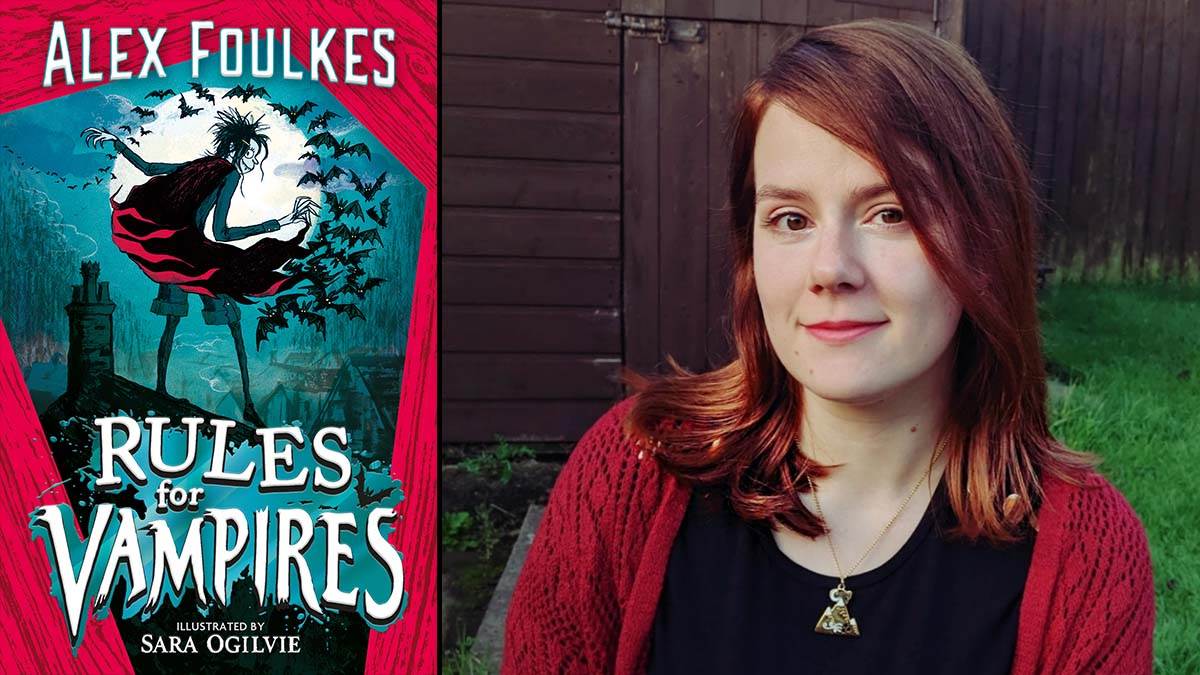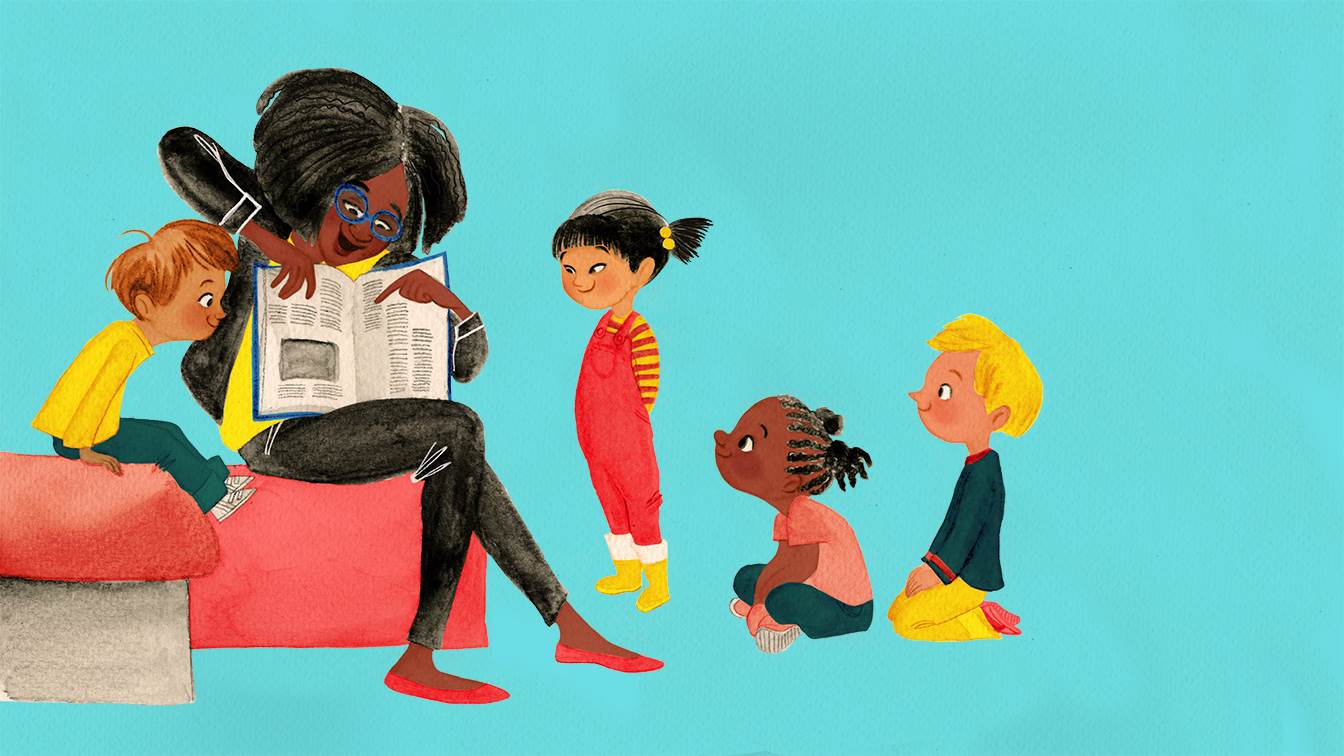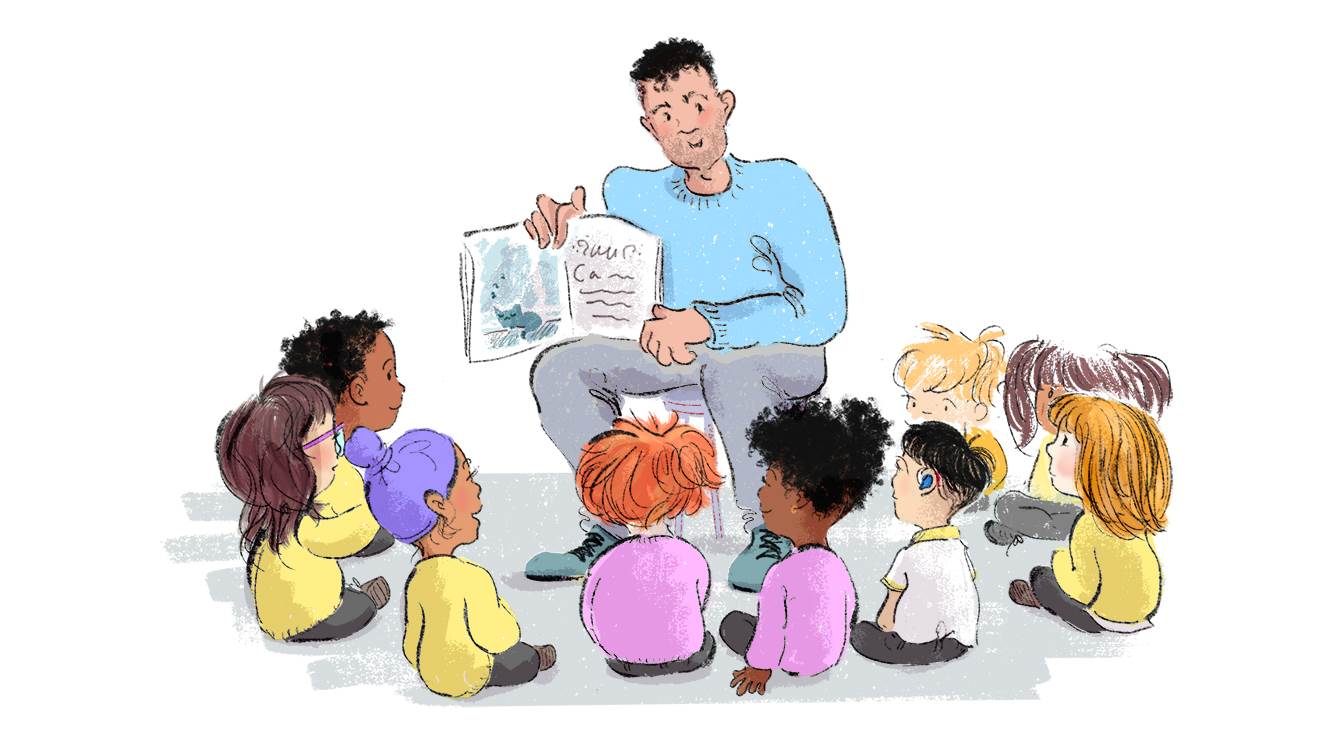The magic of reading aloud: 5 top tips for sharing books with children
Published on: 04 October 2021 Author: Alex Foulkes
School librarian and author Alex Foulkes knows how special reading books out loud to children can be - and here, she shares her top tips to help you do it too.

When I try to explain my journey from school librarian to children's author, I sound like I've climbed a mountain. As a writer, you prepare yourself as best as you can and set off at the crack of dawn. There are so many opportunities to lose your footing, or to wander down the wrong path, or to become disillusioned and quit.
But in truth, going from running a school library to being an author feels like a gentle slide – not because it was an easy road to being published (far from it!) It's because, in my head, I never left the library at all.
I think being a librarian can be a state of mind. You should have a love of books for sure: new books, old books, timeless books, books in good condition, books that have been well-loved, books that need some TLC so they can be loved again... But I think really, anyone with a passion for stories and sharing them with others probably has a Librarian Heart.
Discovering the joy of reading out loud

Years ago - ages before I first imagined Leo the Vampire running through the deep, dark Dreadwald - I had a Year 5 reading group. We would meet in the library and the children got comfy on the sofas and beanbags. I sat and read Cressida Cowell's How to Train Your Dragon. We began with around eight students, but this number had doubled after a few weeks. We also had older students come and join us, for the pleasure of lying coolly back and watching the mayhem of the younger ones.
I was first interested in improving my ability to read aloud for a couple of reasons. I was the school librarian and a teaching assistant. It was the best and most fun way, in my mind, for me to promote reading for enjoyment.
It allowed our students to access stories they might struggle with alone. It enabled our confident readers to enjoy stories they could read, but in a different way; it became an interactive performance where everyone could join in, sparked by the words on the page. The world of Hiccup and Toothless sprang to life through the imaginations of the children.
It was also an excuse for me to wear a plastic Viking hat (not that the horns were historically accurate, as one of my students would inform me) and for us all to roar so loudly that we accidentally disrupted the classes next door. I bought a cheap, inflatable dragon that developed puncture after puncture after being cuddled too much, and was eventually laid to rest after a short but beautiful ceremony.
In an effort to be braver, I took on the made-up character of Wigfrid – a Viking warrior lady with a crush on Gobber the Belch and his hairy shorts. Every time the group met, the students prompted me to show them the illustration of Gobber in chapter one of How to Train Your Dragon. I blew a kiss to the picture, prompting the children to squeal and roll around on the floor in disgust. It became our routine before we would settle down to read.
Even when you are a bit shy and a fan of calm and quiet, there is something about reading aloud to a group that can transform you. But there is magic too in the peaceful one-to-one or small group reading – especially when a child can read to you too. I believe that this ritual, especially for parents and carers at bedtime, makes such a difference to children and how they feel about stories, no matter their reading ability.
My five top tips for reading out loud

If you are a librarian at heart too, and you're still gaining confidence in reading aloud, here are some tips that have really helped me:
1) Have a quick read of your book beforehand. It can be helpful to know key ideas and themes ahead of time. For example, reading Lisa Thompson's The Goldfish Boy to Year 7 and being prepared for conversations about mental health led to some meaningful, sensitive thoughts from the students.
2) When picking up your book after having a break, ask a reader to tell you what happened previously. Asking a willing volunteer to recount important parts of the story can help contextualise what they are about to read next. If you are in a group and a child was missing for the previous session, this will gently catch them up without losing the attention of everyone else.
3) You don't have to do voices. Different, distinct voices are wonderful, but not everyone can do them (for example: myself!) Even if you are 'bad at voices', as I am, putting emotion into your reading will bring the characters to life. How is a character feeling when they speak? Are they happy? Annoyed? Feeling ill? Have they smelled something bad and are holding their nose?
4) Adjust your tone to your audience. When reading to larger groups, it can help to have variations in volume, to move around a bit or to pull faces. But one-to-one in the library – or if you are a parent or carer and winding down for bed – keeping a calmer atmosphere can foster enjoyment of reading as a peaceful activity too. Relax and enjoy.
5) Don't be afraid to make mistakes in your reading. Everyone slips up when reading – even adults. Adults stutter or get words wrong. I do, all the time. For young readers who are worried about mistakes or find them embarrassing, hearing an adult they trust read freely and make the occasional error can be reassuring.
My new dark comedy novel for children aged 9-12, Rules for Vampires, was written with my love of reading aloud in mind. If you enjoy reading it with your own children or students, I'd love to hear your thoughts!
I hope you have a great time and enjoy all of your reading together, exploring new worlds through stories.





